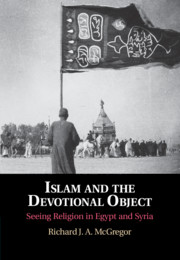Book contents
- Islam and the Devotional Object
- Islam and the Devotional Object
- Copyright page
- Contents
- Illustrations
- Preface
- Acknowledgments
- Note on Transliteration and Dates
- Introduction
- One Objects over Distance
- Two An Exuberant and Elusive Palanquin
- Three Processions, Banners, and the Religious Spectacle
- Four The Relic and Its Witness
- Five Religious Topography and the Relic
- Six Defacing and Displacing
- Epilogue
- Notes
- Bibliography
- Index
Two - An Exuberant and Elusive Palanquin
Published online by Cambridge University Press: 16 June 2020
- Islam and the Devotional Object
- Islam and the Devotional Object
- Copyright page
- Contents
- Illustrations
- Preface
- Acknowledgments
- Note on Transliteration and Dates
- Introduction
- One Objects over Distance
- Two An Exuberant and Elusive Palanquin
- Three Processions, Banners, and the Religious Spectacle
- Four The Relic and Its Witness
- Five Religious Topography and the Relic
- Six Defacing and Displacing
- Epilogue
- Notes
- Bibliography
- Index
Summary
Wahhabi-inspired criticism aligned with the colonial museum led to the official demise of kiswa and palanquin devotions. Argues for their rich afterlives as both relics and evocations through rituals centered on saintly shrines and processions.
- Type
- Chapter
- Information
- Islam and the Devotional ObjectSeeing Religion in Egypt and Syria, pp. 54 - 85Publisher: Cambridge University PressPrint publication year: 2020

